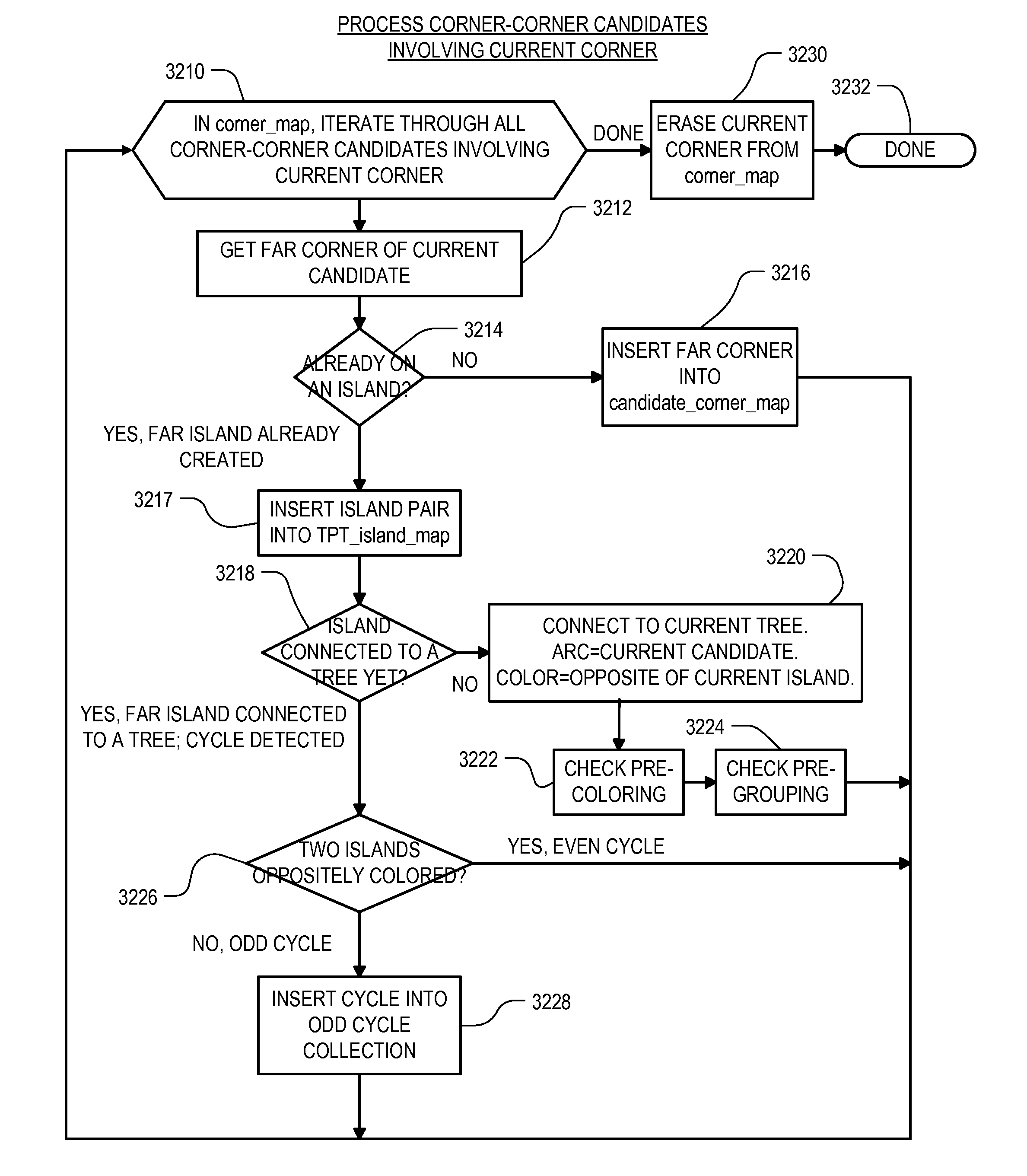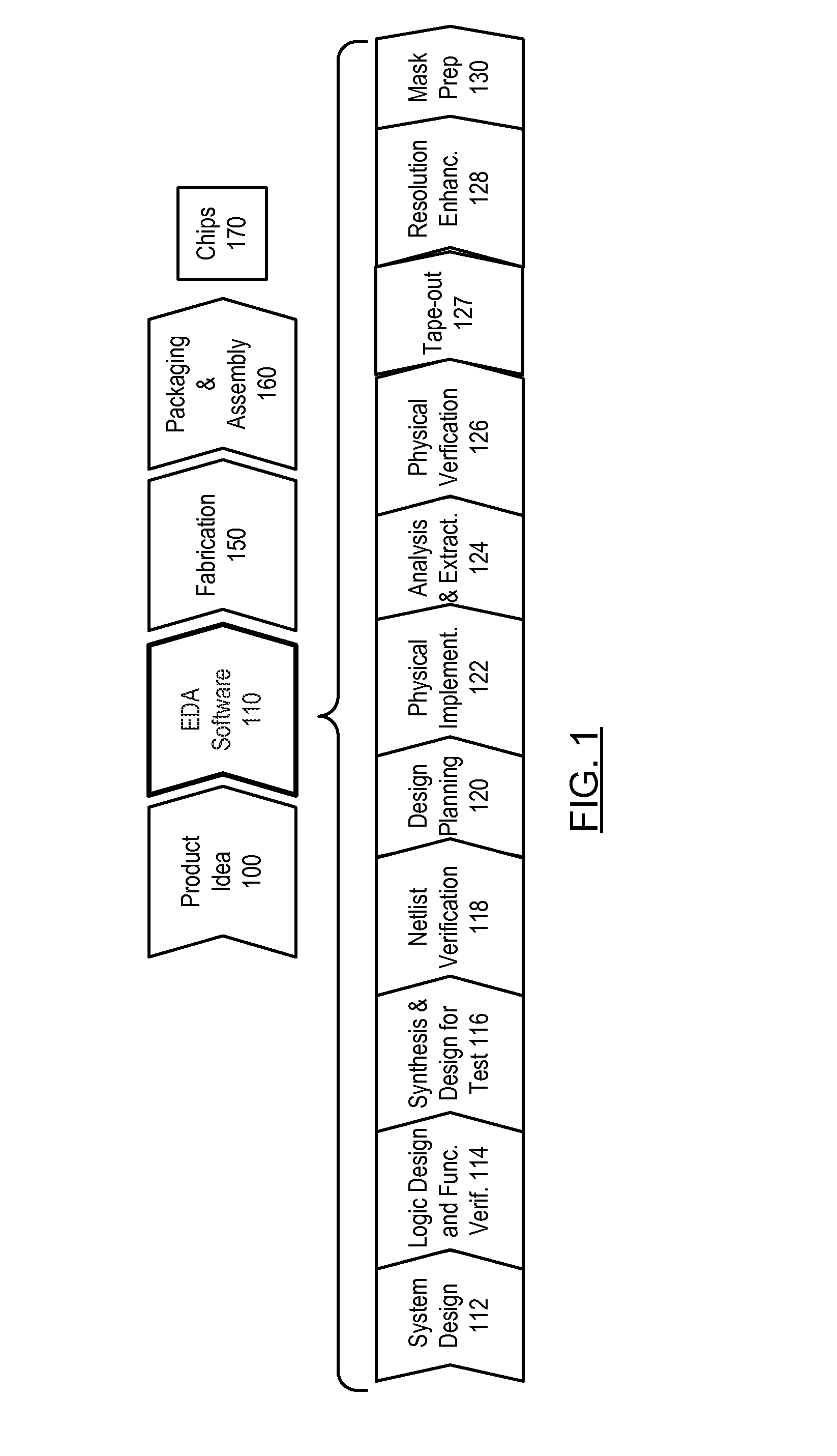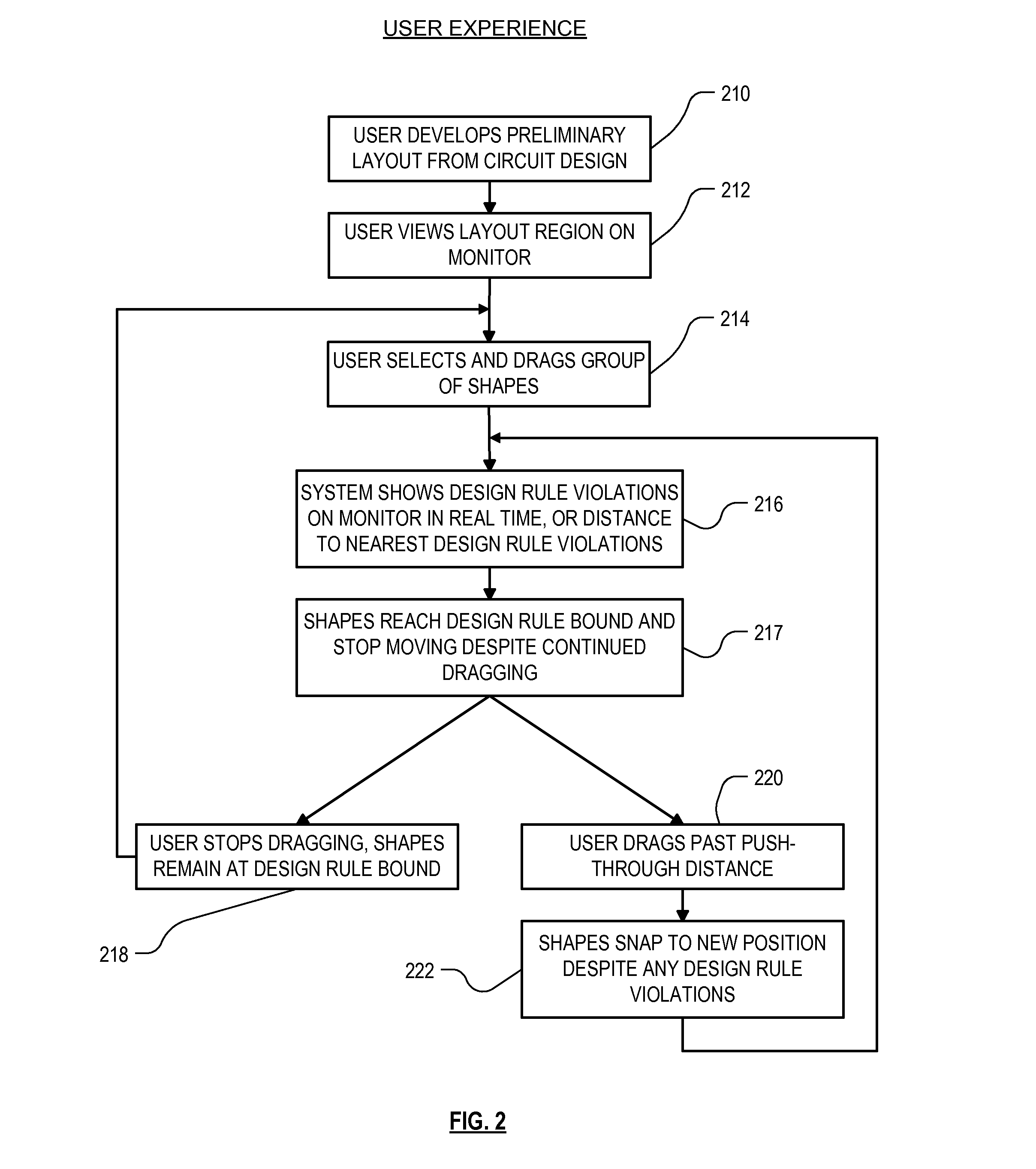Low-overhead multi-patterning design rule check
a design rule and low-overhead technology, applied in the field of electronic design automation, can solve the problems of affecting the design of the circuit, the difficulty of ensuring the design is correct, so as to avoid double-patterning or multi-patterning violations
- Summary
- Abstract
- Description
- Claims
- Application Information
AI Technical Summary
Benefits of technology
Problems solved by technology
Method used
Image
Examples
example implementation
[0070]FIG. 2 illustrates an example user experience when using an embodiment of the system as described herein. The flow chart of FIG. 2 occurs within step 122 (FIG. 1).
[0071]In step 210, the user develops a preliminary layout from a circuit design. As used herein, the term “circuit design” refers to the gate or transistor level design, before layout. The circuit design is often represented internally to the system in a netlist file. The layout is represented internally to the system in a geometry file which defines, among other things, all the shapes to be formed on each mask that will be used to expose the wafer during fabrication. The geometry file can have any of several standard formats, such as GDSII, OASIS, CREF, and so on, or it can have a non-standard format. The file describes the layout of the circuit design in the form of a mask definition for each of the masks to be generated. Each mask definition defines a plurality of polygons. At the time if FIG. 2, no resolution enh...
PUM
 Login to View More
Login to View More Abstract
Description
Claims
Application Information
 Login to View More
Login to View More - R&D
- Intellectual Property
- Life Sciences
- Materials
- Tech Scout
- Unparalleled Data Quality
- Higher Quality Content
- 60% Fewer Hallucinations
Browse by: Latest US Patents, China's latest patents, Technical Efficacy Thesaurus, Application Domain, Technology Topic, Popular Technical Reports.
© 2025 PatSnap. All rights reserved.Legal|Privacy policy|Modern Slavery Act Transparency Statement|Sitemap|About US| Contact US: help@patsnap.com



